
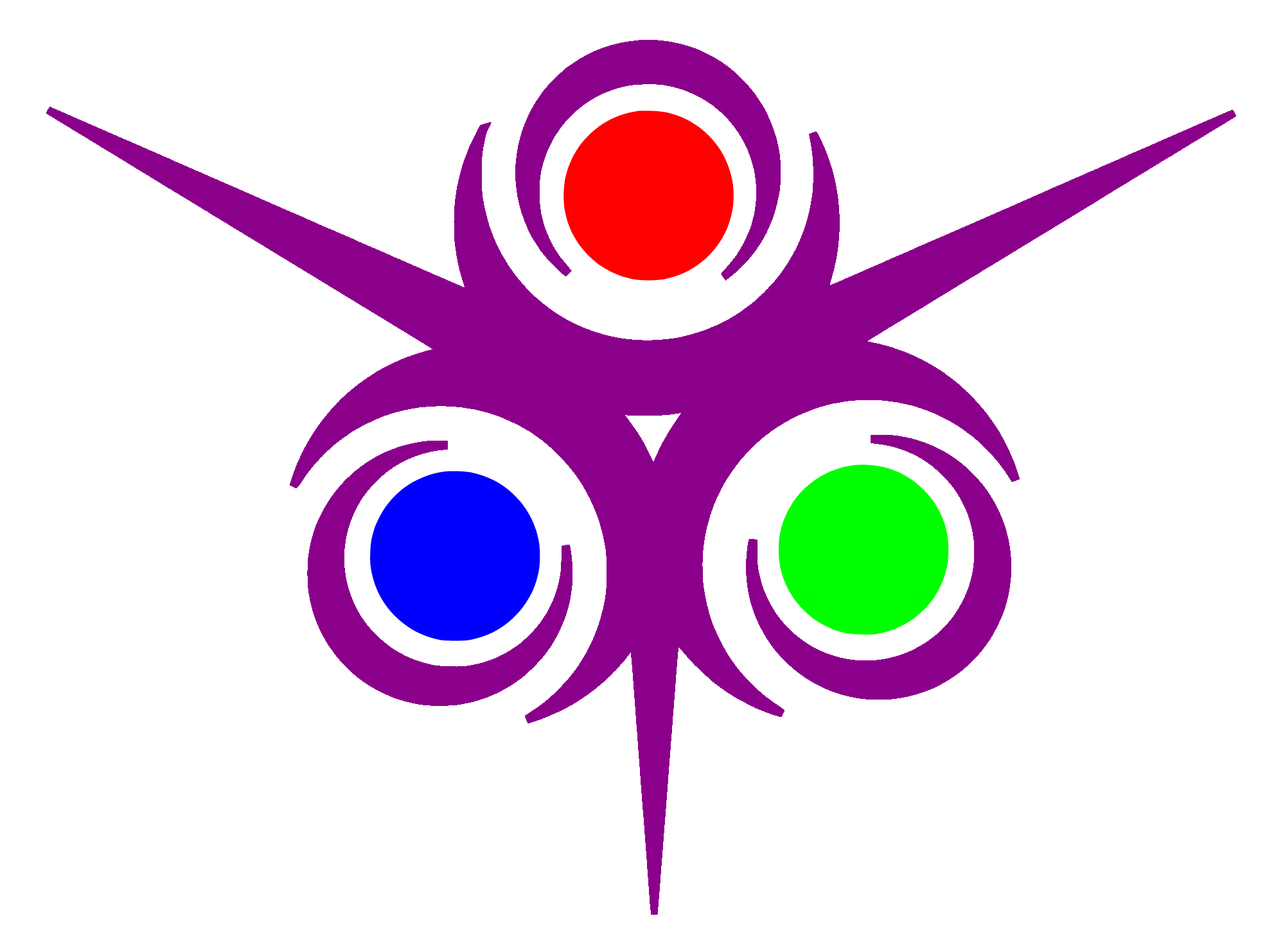

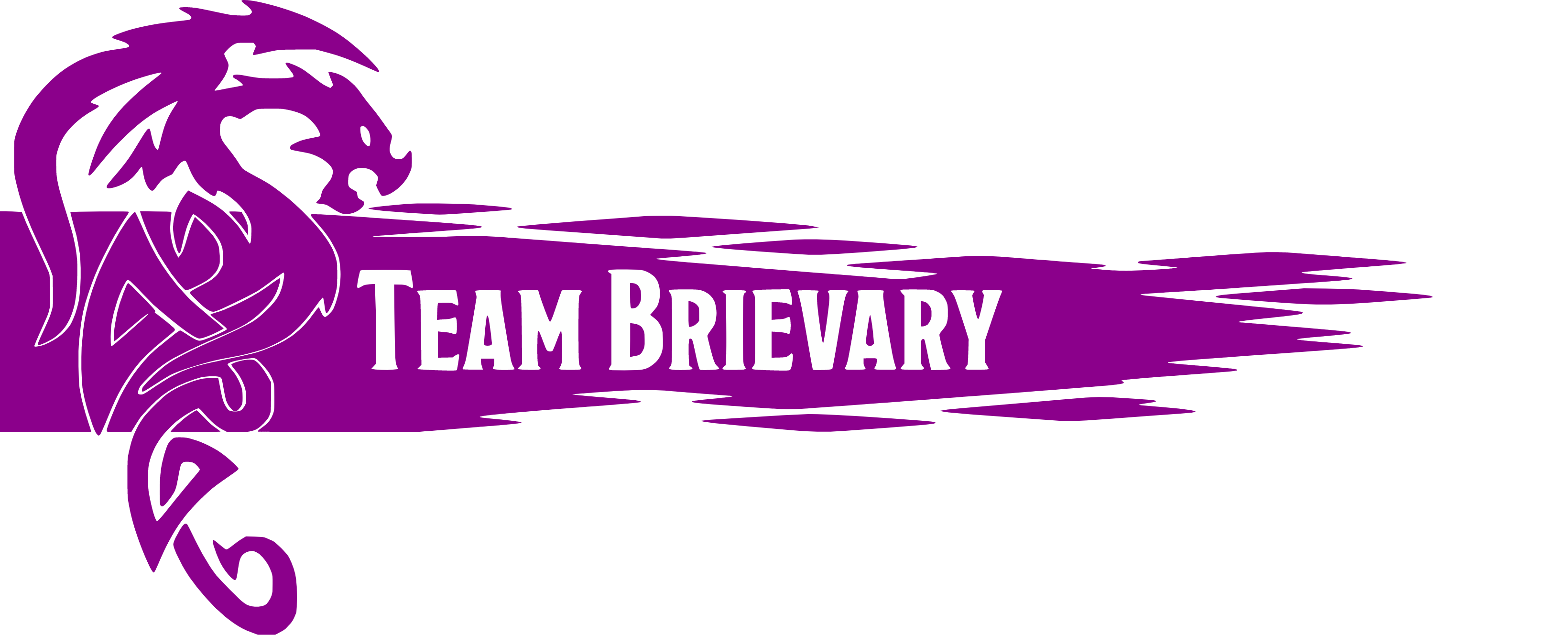


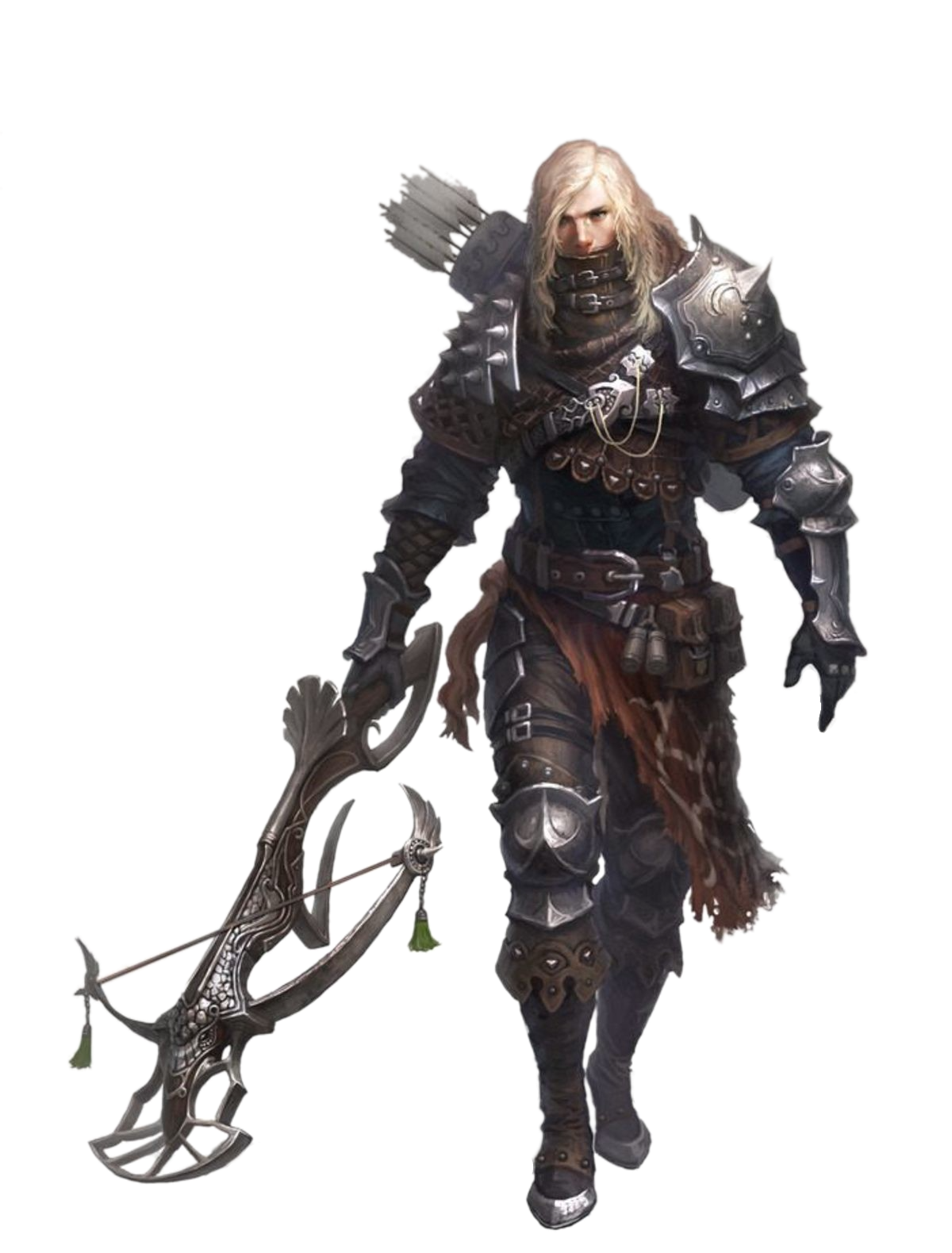
Arbalest
Not just wizards and warlocks who continue to seek the secrets of the world, and create new spells, but the fighters and monks who devise new combat techniques, and the paladins and clerics who make new gods. There is something about sentience that leads to change, improvement, and discovery. And nothing brings about those changes better than war.
Armies are made of many divisions, and the divisions are designed to fill out specific purposes on the battlefield. Mage, cavalry, infantry, security... arbalest. The crossbowmen have long been incorporated into militaristic strategy, however the many warbands of arbalests have pushed the definition of crossbowmen past it's initial boundaries, incorporating ancient shield wall tactics with the benefits of ranged weaponry, and have specialized beyond that, with some studying the path of magic, and other advancing the study of gunpowder. needless to say, it is these warbands who will dictate the future of warfare within the realms of the Brievary."
-- Squall, The Thundercall, Evolution of War
A dragonborn sticks her shield into the ground, finishing her bands shield wall. As she starts to load her bolts, she peers down the hill towards the pikemen who are arranging themselves for their advance. Soon a hail of bolts will be upon them, and the battle will truly start.
The halfling ducks behind his shield. With quick wit, he grabs a small contraption the warbands resident gnome had given him, and chucks it towards the enemies. With a large boom, a chunk of land and limbs go flying, disorienting the enemies.
Throwing back his beer, a human surveys the surrounding, as his troupe continue to drink and enjoy themselves, relishing one last night of activities before they head off for the battlefield in the morning.
These arbalests depict the mindset and life an arbalest may experience, one of battle and bloodshed. However, what makes an arbalest distinct is their teamwork and defensive capabilities, entrenching themselves before throwing whatever brazen idea they have developed at the opposition.
Tactile and militaristic, arbalests are soldiers and mercenaries who have trained and perfected their unified battle skills, dedicated to defending key points on a battlefield and dealing with their opponent divisions from a range.
Tactile
Often hailing from military divisions and mercenary companies, those who find themselves trained as mercenaries will undoubtedly also find themselves trained in team based battle tactics. Thanks to this, the masses have developed a general consensus about arbalest fighting styles, believing that through their battle methods and teamwork, they can overcome foes with the number advantage, and monsters who outclass them in size.
It is inevitable that a battle style devised around working together to overcome the odds would develop a think first strategy, with warbands performing practice drills to assure that their edge never dulls, and they can perform complex maneuvers in the heat of the moment, as if such tactics are ingrained in their muscles. thus the term tactile becomes something of an attribute, tied directly to the term arbalest itself.
Warbands
As arbalests are typically a militant job, one would find themselves a part of a military or mercenary faction. These factions, or warbands as they've come to be known specialize in large scale battles, and train their members how to work together and utilize their skill sets to overcome enemy battalions.
While many warbands exists, and often share, copy, or outright steal tactics from each other, certain battle styles are inevitably attributed to makeshift warbands, used to describe battle tactics, rather than any actual specific group of arbalests.
Mercenary Groups & Military Squads
Typically, an arbalest will have spent some portion of their history as part of a mercenary troupe, or a nobles army. These ties give wandering arbalests a group to fall back on, and friends in many places, with the names of their warbands even attributing them some level of fame or recognition.
When determining the name of your Mercenary Group and Military Battalion, consider what circumstances brought lead you to join such a group. Were you the latest generation in a long line of soldiers? Are the circumstances of your life rough enough to leave you with little choice but to be a sell-sword? Was the group's name the coolest?
Troupe
| d6 | Troupe Name |
|---|---|
| 1 | Silver Nighthawks |
| 2 | Blue Bloodhounds |
| 3 | Red Rovers |
| 4 | Green Krakens |
| 5 | Black Serpents |
| 6 | Flock of Brass |
Path Less Traveled
It is rare for arbalests to move outside of warbands, mercenary troupes, and militaries, though not unheard of. While often banding together, so as to cover their backs through organized warfare, some arbalests seek to use their skills for self glory, or apply their tactics to a band of misfits whose skillsets cover a variety of areas. Such arbalests are considered rare, but not unheard of.
When determining your reason for wandering the world, and joining up with a band of adventurers, consider what circumstances lead you to the current situation. Was your troupe wiped out in the last battle? Were you never a member of a warband to begin with? Perhaps the band retired, leaving you and your compatriots to seek out new employment quickly.
Reasons to Leave
| d6 | Event |
|---|---|
| 1 | After my warband failed to properly pay me for the umpteenth time, I decided to strike it out on my own, as an adventurer's pay is better than none. |
| 2 | I was the last survivor of my warband during a great battle, I had fled with my life and need to find work to make ends meet. |
| 3 | My warband forcibly removed me from their ranks due to some failure I caused. |
| 4 | I was paid by a benefactor to perform a solo tasks, and am temporarily away from my warband completing it. |
| 5 | I was trained by an old retired Arbalest, and never actually joined a warband, or even experienced a real battle. |
| 6 | My warband was retired, with the surviving members going their separate ways. |
While seeming like a specialized niche, the arbalests have been quite innovative in their battle-tactics, spreading over a wide range of specialties. Traditionally, one would think of them as another type of fighter, however with the unique differences posed through their weaponry and stratagems shows them in a unique light, from the arcane, to the arsonists.
-- Viatorem
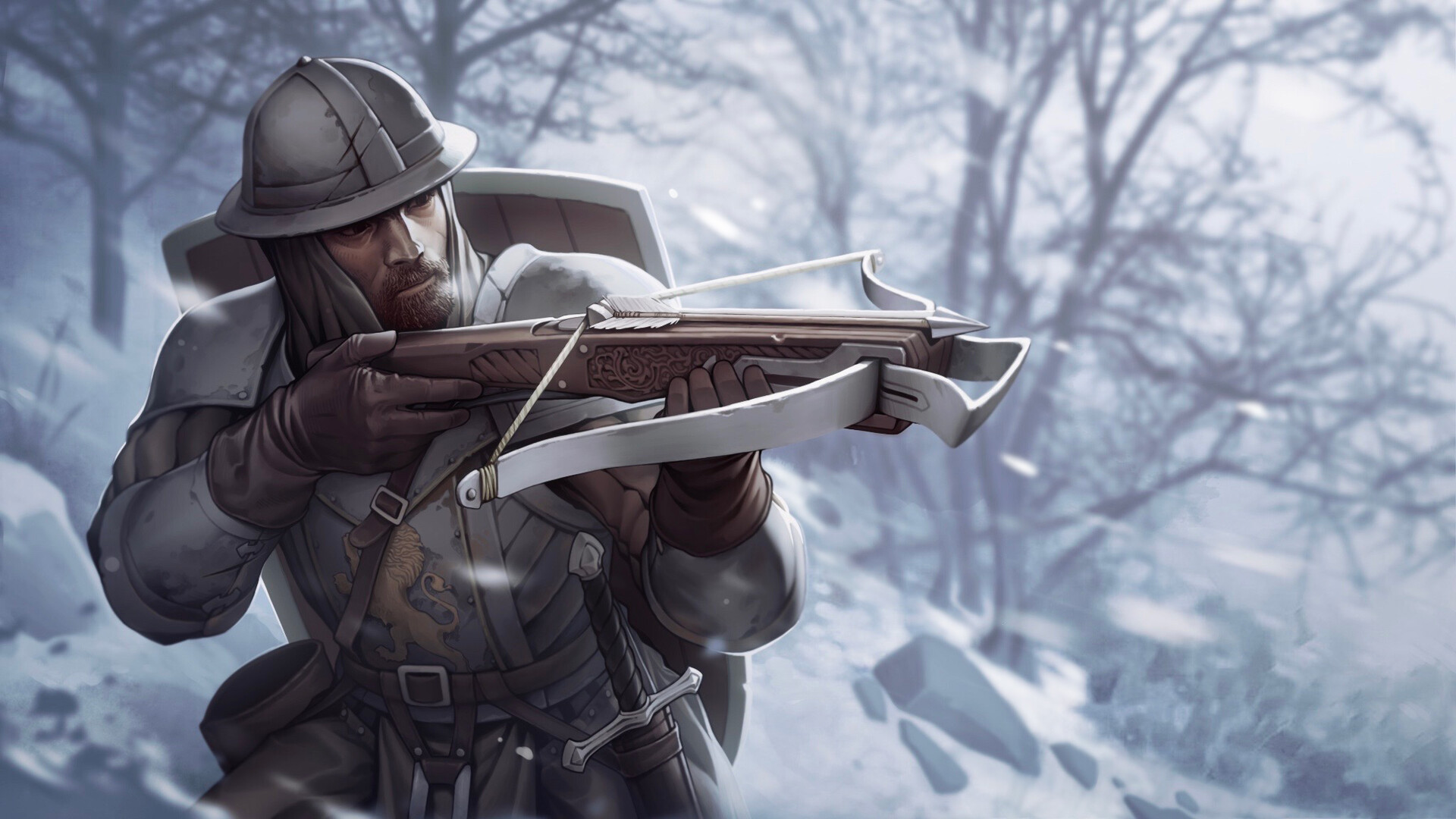
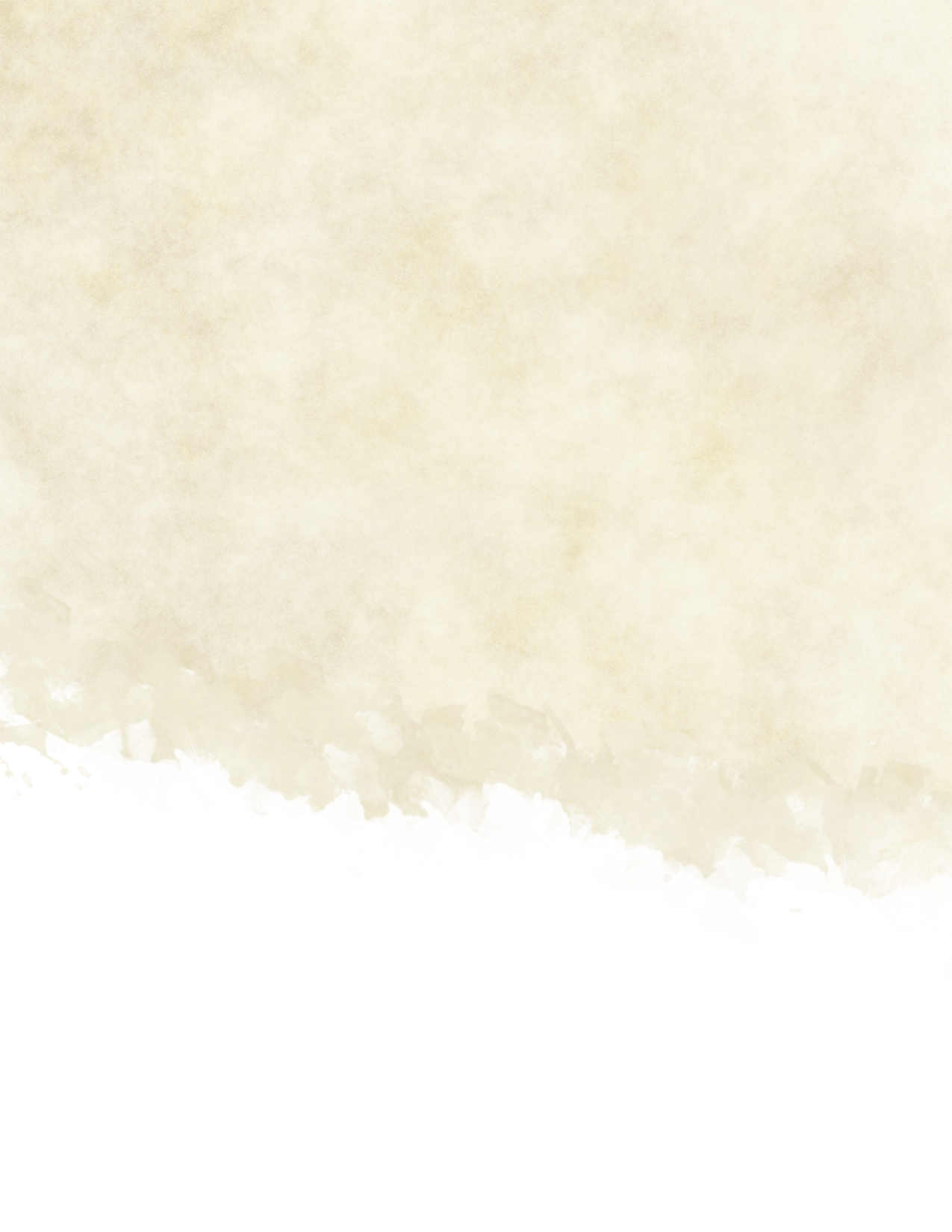


Arbalest
| Level | Proficiency Bonus | Features | Trigger Finger |
|---|---|---|---|
| 1st | +2 | Ranged Expert, Trigger Finger | 1d4 |
| 2nd | +2 | Fighting Style, Tower Shield | 1d4 |
| 3rd | +2 | Arbalest Warband, Steady Aim (Optional) | 2d4 |
| 4th | +2 | Ability Score Increase, Martial Versatility (Optional) | 2d4 |
| 5th | +3 | Twinstrike | 3d4 |
| 6th | +3 | Concussive Bolt | 3d4 |
| 7th | +3 | Aversion | 4d4 |
| 8th | +3 | Ability Score Increase, Martial Versatility (Optional) | 4d4 |
| 9th | +4 | Warband Feature | 5d4 |
| 10th | +4 | Strategic Reposition | 5d4 |
| 11th | +4 | Counterbolt | 6d4 |
| 12th | +4 | Ability Score Increase, Martial Versatility (Optional) | 6d4 |
| 13th | +5 | Warband Feature | 7d4 |
| 14th | +5 | Level Bolt | 7d4 |
| 15th | +5 | Field Dressing | 8d4 |
| 16th | +5 | Ability Score Increase, Martial Versatility (Optional) | 8d4 |
| 17th | +6 | Warband Feature | 9d4 |
| 18th | +6 | Deadly Volley | 9d4 |
| 19th | +6 | Ability Score Increase, Martial Versatility (Optional) | 10d4 |
| 20th | +6 | Precision Kill | 10d4 |
Creating an Arbalest
As you create your arbalest character, think about two related elements of your character’s background: Where did you get your training and develop your skills, and what set you apart from the typical warriors that one would find on the battlefield? Were you a leader amidst your peers? Did you get extra help from a mentor, perhaps because of your
exceptional dedication? What drove you to this training in the first place? A threat to your homeland, a thirst for blood, or a desire for coin might all have been factors.
You might have experienced formal training in a noble’s army or a local militia. Perhaps you were trained in a war band, learning strategy, tactics, and military history, while working for the highest bidder. Or you might be self-taught wanderer who has developed their skills through their life experiences. Did you take up your arms as a way to escape the simple life, or were you born into the battlefield?
Where did you acquire your arms and gear? They might have been military issue or family heirlooms, or perhaps you devised them yourselves, to aid in specific situations your may have found yourself in during your skirmishes. Your equipment are now an extension of your being, the only thing preventing deaths grasp from taking you early.
Quick Build
You can make an arbalest quickly by following these suggestions. First make Dexterity your highest ability score, followed by Constitution. Second choose the solider background.
Class Features
As an arbalest, you gain the following class features.
Hit Points
Hit Dice: 1d10 per arbalest level
Hit Points at 1st Level: 10 + your Constitution modifier
Hit Points at Higher Levels: 1d10 (or 6) + your Constitution modifier per arbalest level after 1st
Proficiencies
Armor: Light armor, medium armor, shields
Weapons: Simple weapons, short swords, light crossbows, heavy crossbows, hand crossbows
Tools: Vehicles (land)
Saving Throws: Dexterity, Constitution
Skills: Choose three skills from Acrobatics, Athletics, History, Insight, Intimidation, Investigation, Perception, Persuasion, Survival
Equipment
You start with the following equipment, in addition to the equipment granted by your background:
- (a) Two daggers or (b) any simple weapon
- (a) Hide armor or (b) leather armor
- (a) A dungeoneer's pack or (b) an explorer's pack
- A shield, a healer's kit, and a light crossbow with 20 bolts
Ranged Expert
Beginning at 1st level, your arbalest training has taught you how to handle heavier weapons and shields simultaneously. When using a ranged weapon that has the two-handed property, you can still equip a shield without penalty.
Trigger Finger
Also at 1st level, you know how to strike with precision at range. Once per turn, you can deal an extra 1d4 damage to one creature you hit with a ranged attack if you have advantage on the attack roll.
You don't need advantage on the attack roll if another enemy of the target is within 10 feet of it, that enemy isn't incapacitated, and you don't have disadvantage on the attack roll. the attack must be used by any crossbow.
The amount of the extra damage increases as you gain levels in this class, as shown in the Trigger Finger column of the Arbalest table.
Fighting Style
At 2nd level, you adopt a style of fighting as your specialty. Choose one of the following options. You can’t take a Fighting Style option more than once, even if you later get to choose again.
Archery
You gain a +2 bonus to attack rolls you make with ranged weapons.
Defense
While you are wearing armor, you gain a +1 bonus to AC.
Close Quarters Shooter (UA)
When making a ranged attack while you are within 5 feet of a hostile creature, you do not have disadvantage on the attack roll. Your ranged attacks ignore half cover and three-quarters cover against targets within 30 feet of you. You have a +1 bonus to attack rolls on ranged attacks.
Interception
When a creature you can see hits a target, other than you, within 5 feet of you with an attack, you can use your reaction to reduce the damage the target takes by 1d10 + your proficiency bonus (to a minimum of 0 damage). You must be wielding a shield or a simple or martial weapon to use this reaction.
Protection
When a creature you can see attacks a target other than you that is within 5 feet of you, you can use your reaction to impose disadvantage on the attack roll. You must be wielding a shield.
Tower Shield
Starting at 2nd level, you adopt a stance that can bolster your defense at a cost to your mobility. As a bonus action, you can drop to your knees and fortify your defense. While in this stance, your AC increases by 1, and you gain the benefits of half cover, however your movement is reduced to 0, and you gain disadvantage on all dexterity saving throws.
If you are using a magic shield, your bonus to AC increases in accordance to the magic bonus of the shield, with a +1 shield giving your a +2 bonus, +2 granting a +3, and a +3 granting you a plus 4 while in the Tower Shield stance.
You remain in this stance until you are knocked unconscious, incapacitated, or dismiss the stance as a bonus action.
Arbalest Warband
When you reach the 3rd level, you can select an Arbalest Warband. This choice gives you a feature at 3rd, 9th, 13th, and 17th level.
Steady Aim (Optional)
At 3rd level, as a bonus action, you give yourself advantage on your next attack roll on the current turn. You can use this bonus action only if you haven't moved during this turn, and after you use the bonus action, your speed is 0 until the end of the current turn.
Martial Versatility (Optional)
Whenever you reach a level in this class that grants the Ability Score Improvement feature, you can replace a fighting style you know with another fighting style available to arbalest. This replacement represents a shift of focus in your martial practice.
Twinstrike
Beginning at 5th level, you can load two bolts into your crossbow and attack twice, instead of once, whenever you take the Attack action on your turn.
Concussive Bolt
Beginning at 6th level, you can release powerful bolts designed to sway the advance of your opponents. While you are in the Tower Shield stance, you can take an action to launch an arrow with so much concussive force that it launches the target back. One creature that you launch your bolt at within 15 ft. of you must make a Dexterity saving throw. On a failed save, a creature takes 2d8 force damage and is pushed 10 feet away from you. On a successful save, the creature takes half as much damage and is not pushed.
Aversion
Beginning at 7th level, you can ward off certain area effects, such as a red dragon's fiery breath or an ice storm spell with your shield. When you are subjected to an effect that allows you to make a Dexterity saving throw to take only half damage, you instead take no damage if you succeed on the saving throw, and only half damage if you fail.
Strategic Reposition
At 10th level, you learn to quickly and effectively reposition yourself while in a Tower Shield stance. While in a Tower Shield stance, you can move up to 10 ft. and reposition yourself without exiting the stance. Once you have done so, you can't use this feature again until you have completed a short or long rest.
Counterbolt
At 11th level you attempt to interrupt a creature's ranged weapon attack. As a reaction, you can expend one bolt or arrow to shoot the ranged weapon out of the air preventing the attack from landing. The bolt or arrow is destroyed in the process. you can use this feature after the DM rolls the dice, but before it goes into effect.
Level Bolt
At 14th level you can use your shield to steady your weapon. While in a Tower Shield stance, you add a +1 bonus to all ranged weapon attack rolls you make.
Field Dressing
At 15th level, you finish you medical training. So long as you have a healer's kit, you can use an action to heal one creature within 5 ft. of you a number of hit points equal to 3d10 + their constitution modifier. You can use this feature a number of times equal to half your proficiency modifier, regaining all expended uses after completing a long rest.
Deadly Volley
Starting at 18th level, you can use your action to make three fast attacks, targeting one creature. A target affected by this must roll a Dexterity saving throw (DC 8 + your proficiency bonus + your Dexterity modifier). On a failed save, the target is stunned for a number of rounds equal to your Dexterity modifier. On a successful one, takes only half damage and suffer no other effects. You can use this feature twice, regaining all your uses after finishing a long rest.
Precision Kill
At 20th level, you have mastered your aim and can fire your bolts true. As an action you can make a single ranged weapon attack against one creature you can see within range. If the target has 75 hit points or fewer, it dies. Otherwise, the creature suffers regular damage from the attack.
Once you use this feature, you can’t use it again until you finish a long rest.
Arbalest Warband
An arbalest warband is a battle group an arbalests chooses to learn specialized combat tactics. Different arbalests choose different approaches to combat. The arbalest warband you choose to emulate reflects your approach.
Band of Guardsmen
Arbalests are first and foremost, a defended infantry group, and work best in groups of trained individuals that know how to properly utilize their tactics. Arbalests of the Band of Guardsmen warband take these tactics to a new level, training to use heavier armor, and adapting group defense skills, as such it is rare to ever see a member of the Band of Guardsmen warband by themselves.
Band of Guardsmen Features
| Level | Feature |
|---|---|
| 3rd | Bonus Proficiency, Guard Initiate |
| 9th | Bayonet |
| 13th | Grit of Steel |
| 17th | Shield Wall |
Bonus Proficiency
When you select this warband at 3rd level, you gain proficiency with martial weapons and heavy armor.
Guard Initiate
Medium Humanoid (Any Race), Any Alignment
- Armor Class 16 (chain shirt, shield)
- Hit Points 3 + five times your Arbalest level
- Speed 30 ft.
STR DEX CON INT WIS CHA 15 (+2) 12 (+1) 14 (+2) 13 (+1) 10 (+0) 11 (+0)
- Skills Perception +2
- Senses Darkvision (depending on race), passive Perception 12
- Languages any one language (usually Common)
- Challenge —
- Proficiency Bonus equals your bonus
Interception. When a creature the Guard Initiate can see hits a target, other than it, within 5 feet of it with an attack, it can use your reaction to reduce the damage the target takes by 1d10 + PB (to a minimum of 0 damage).
Actions
Multiattack. The Guard Initiate makes two melee attacks: two with its Shortsword. Or the Guard Initiate makes two ranged attacks with its Longbow. (This action can only be applied when you reach level 5)
Ability Description. Melee Weapon Attack: PB to hit, Reach/Range, one target. Hit: 5 (1d6 + PB) piercing damage.
Ability Description. Ranged Weapon Attack: PB to hit, range 80/320 ft., one target. Hit: 5 (1d6 + PB) piercing damage.
Guard Initiate
Beginning when you select this warband at 3rd level, you've been given control of a Guard Initiate.
The Guard Initiate is friendly to you and your companions and obeys your commands. See this creature's game statistics in the Guardsmen Guard Initiate stat block, which uses your proficiency bonus in several places.
In combat, the Guard Initiate shares your initiative count, but it takes its turn immediately after yours. The only action it takes on its turn is the Dodge action unless you take a bonus action on your turn to command it to take another action. That action can be one in its stat block or some other action. If you are incapacitated, the Guard Initiate can take any action of its choice, not just Dodge.
if the Guard Initiate is reduced to 0 hit points it dies to regain a new Guard Initiate you must go to any capital city or town and enlist aid from other Guards.
Bayonet
At 9th level, you can mount any sword or dagger to the end of a crossbow, if a target comes within 5 feet of you you can use a reaction to hit them with the bayonet it deals the damage that the sword or dagger does. this reaction can only be used once per long rest. Bayonets cannot be used on weapons with the heavy property.
Grit of Steel
At 13th level, while you are in a Tower Shield stance, if an attacker that you can see within 15 ft of you hits you with an attack, you can use your reaction to halve the attack's damage against you.
Shield Wall
At 17th level when you and your guard initiate the Tower Shield stance within 5 feet of each other it grants three quarters cover instead of half cover to both of you. Additionally any allies who are attacked within 5 feet of you while you are between the source of the attack and them in Tower Shield stance benefit from your cover.
Band of Firearms
Realizing the advancements in ranged weaponry and the innovations that warriors were incorporating, the Avaunt Warhawk Warband dropped their crossbows and incorporated firearms into their tactics and battle style. This advancement has boosted the fame and recognition of the Avaunt Warhawks, and has lead to many Arbalest Warbands to adopt the new technologies.
Band of Firearms Features
| Level | Feature |
|---|---|
| 3rd | Firearms Expert |
| 9th | Shieldholster |
| 13th | Rapid Repair |
| 17th | Powder Cake |
Firearms Expert
Starting when you choose this archetype at 3rd level, you gain proficiency with firearms, allowing you to add your proficiency bonus to attacks made with firearms.
Additionally, you gain proficiency with Tinker’s Tools. You may use them to craft ammunition at half the cost, repair damaged firearms, or even draft and create new ones (DM’s discretion). Some extremely experimental and intricate firearms are only available through crafting.
Shieldholster
When you reach 9th level, you develop an addition to your shield to holster an additional firearm. While in your Tower Shield stance, you can swap between guns as a bonus action.
Firearm Properties
Band of Firearms is a variation of the Fighter Gunslinger subclass. Therefore, the guns that this subclass is designed to used is the same as the previously mentioned subclasses
Please refer to Matt Mercer's Firearm Properties for additional information.
Rapid Repair
Upon reaching 10th level, you learn how to quickly attempt to fix a jammed gun. You can attempt to repair a misfired (but not broken) firearm as a bonus action. you can do this a number of times equal to your Dexterity modifier, regain expended attempts upon the completion of a short or long rest.
Powder Cake
At 18th level, you learn to rework the black powder you use into a makeshift explosive. As a bonus action, you can throw or a small explosive. The explosive has a range of 30 feet and detonates immediately on impact.
When detonated, each creature within a 15-foot radius of the explosive must make a Dexterity saving throw, taking 12d6 force damage on a failure and half as much on a success. The DC for this saving throw is equal to 8 + your proficiency bonus, + your dexterity modifier
Once you use this feature, you cannot use it again until you complete a short or long rest.
Band of Monster Hunters
trained as a Monster Hunter, you are an expert at tracking and defeating supernatural threats. Typically mentored by an older, more experienced Monster Hunter, you learn to overcome a variety of unnatural threats, including those of the undead, lycanthropes, and other creatures that haunt the night.
Band of Monster Hunters Features
| Level | Feature |
|---|---|
| 3rd | Monster Tracker, Warding Skills |
| 9th | Monster Mark |
| 13th | Prepped Defense |
| 17th | Monster Ward |
Monster Tracker
Beginning when you select this warband at 3rd level, you have significant experience studying, tracking, hunting, and even talking to the monsters of the night. You have advantage on Wisdom (Survival) checks to track aberations, monstrocities, and undead, as well as on Intelligence checks to recall information about them.
Warding Skills
At 3rd level, you learn to simple magical spells to aid you in your work. You can cast detect magic and protection from evil and good, once each, regaining the use of each spell upon completion of a long rest. Wisdom is your spellcasting ability for these spells.
Monster Mark
At 9th level, you can focus your ire on one foe, increasing the harm you inflict on it. As a bonus action, you designate one creature you can see within 60 feet of you as the target of this feature. You know where the marked creature is for as long as they are marked and they are on the same plane of existence as you.
Additionally, while you are in a Tower Shield stance, you gain advantage on all attack rolls against a marked creature.
This benefit lasts until you finish a short or long rest. It ends early if you designate a different creature.
Prepped Defense
At 13th level, you learn to protect yourself from the monsters of the night. You gain a +2 bonus to saving throws against creatures marked by your Monster Mark feature.
Monster Ward
At 17th level, you gain the ability to counterattack when a monster tries to sabotage you. If a marked target of your Monster Mark feature forces you to make a saving throw, you can use your reaction to make one weapon attack against the quarry. You make this attack immediately before making the saving throw. If the attack hits, your save automatically succeeds, in addition to the attack’s normal effects.
Band of Parabolt Arcanists
Utilizing magic to enhance their combat tactics, Parabolt Arcanists are arbalests who, through study of magic and elven technique, have deduced a means of utilizing magic to enhance their combat capabilities, sometimes forgoing their crossbows, and firing ranged spells from behind their shields, and other times, enchanting their bolts to do better damage.
Band of Parabolt Arcanists Features
| Level | Feature |
|---|---|
| 3rd | Bonus Proficiency, Spellcasting |
| 9th | Magic Bolt |
| 13th | Target Enchantment |
| 17th | Improved War Magic |
Bonus Proficiency
When you select this warband at 3rd level, you gain proficiency with the Arcana skill.
Spellcasting
Also when you select this warband at 3rd level, you augment your tactics with the ability to cast spells.
Cantrips
You learn two cantrips of your choice from the wizard spell list. You learn an additional wizard cantrip of your choice at 10th level.
Spell Slots
The Parabolt Arcainists Spellcasting table shows how many spell slots you have to cast your wizard spells of 1st level and higher. To cast one of these spells, you must expend a slot of the spell's level or higher. You regain all expended spell slots when you finish a long rest.
For example, if you know the 1st-level spell Shield and have a 1st-level and a 2nd-level spell slot available, you can cast Shield using either slot.
Spells Known of 1st Level and Higher
You know three 1st-level wizard spells of your choice, two of which you must choose from the abjuration and evocation spells on the wizard spell list.
The Spells Known column of the Parabolt Arcainists Spellcasting table shows when you learn more wizard spells of 1st level or higher. Each of these spells must be an abjuration or evocation spell of your choice, and must be of a level for which you have spell slots. For instance, when you reach 7th level in this class, you can learn one new spell of 1st or 2nd level.
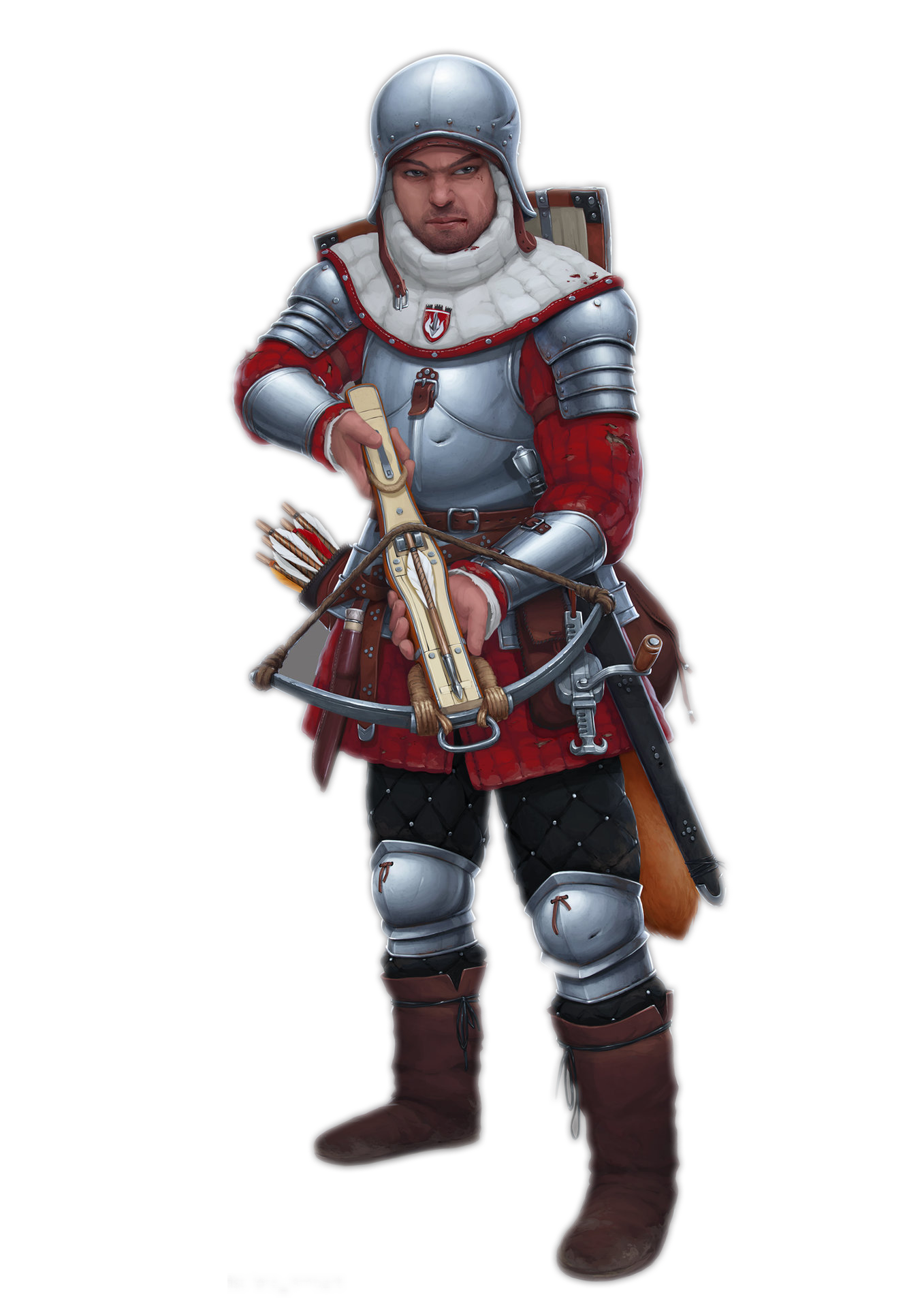
Arcane Archers? Eldritch Knights? Warlocks and Wizards? No, none of these things, just some war-nuts that decided that reloading every few seconds was a waist of their time, and that firing off a fire bolt would do them better.
-- Morberos
Parabolt Arcanists Spellcasting
| Fighter Level | Cantrips Known | Spells Known | 1st | 2nd | 3rd | 4th |
|---|---|---|---|---|---|---|
| 3 | 2 | 3 | 2 | - | - | - |
| 4 | 2 | 4 | 3 | - | - | - |
| 5 | 2 | 4 | 3 | - | - | - |
| 6 | 2 | 4 | 3 | - | - | - |
| 7 | 2 | 5 | 4 | 2 | - | - |
| 8 | 2 | 6 | 4 | 2 | - | - |
| 9 | 2 | 6 | 4 | 2 | - | - |
| 10 | 3 | 7 | 4 | 3 | - | - |
| 11 | 3 | 8 | 4 | 3 | - | - |
| 12 | 3 | 8 | 4 | 3 | - | - |
| 13 | 3 | 9 | 4 | 3 | 2 | - |
| 14 | 3 | 10 | 4 | 3 | 2 | - |
| 15 | 3 | 10 | 4 | 3 | 2 | - |
| 16 | 3 | 11 | 4 | 3 | 3 | - |
| 17 | 3 | 11 | 4 | 3 | 3 | - |
| 18 | 3 | 11 | 4 | 3 | 3 | - |
| 19 | 3 | 12 | 4 | 3 | 3 | 1 |
| 20 | 3 | 13 | 4 | 3 | 3 | 1 |
The spells you learn at 8th, 14th, and 20th level can come from any school of magic.
Whenever you gain a level in this class, you can replace one of the wizard spells you know with another spell of your choice from the wizard spell list. The new spell must be of a level for which you have spell slots, and it must be an abjuration or evocation spell, unless you're replacing the spell you gained at 3rd, 8th, 14th, or 20th level from any school of magic.
Spellcasting Ability
Intelligence is your spellcasting ability for your wizard spells, since you learn your spells through study and memorization. You use your Intelligence whenever a spell refers to your spellcasting ability. In addition, you use your Intelligence modifier when setting the saving throw DC for a wizard spell you cast and when making an attack roll with one.
Spell Save DC
Spell attack modifier
Magic Bolt
At 9th level, you gain the ability to infuse arrows with magic. Whenever you fire a nonmagical bolt from a crossbow, you can make it magical for the purpose of overcoming resistance and immunity to nonmagical attacks and damage. The magic fades from the arrow immediately after it hits or misses its target.
Target Enchantment
At 13th level, you learn an enchantment to assure that all bolts fire true. While in Tower Shield stance, your ranged weapon attacks ignore half and three-quarters cover.
Improved War Magic
Starting at 17th level, when you use your action to cast a spell or cantrip, you can make one weapon attack as a bonus action.
Band of Arsonists
During the many years of training and innovation in battle tactics, a arbalest squadron that would come to be known as the Trailblazing Phoenix Warband developed a nasty tendency to utilize incendiary concoctions and arson based tactics to quickly disorient and dispose of opposing forces.
Band of Arsonists Features
| Level | Feature |
|---|---|
| 3rd | Arsonist's Kit, Alchemical Concoction |
| 9th | Explosive Arrows |
| 13th | Incendiary Chant |
| 17th | Continual Flame |
Arsonist's Kit
Beginning when you select this warband at 3rd level, you learn to create an arsonists kit. An arsonist's kit's components cost a total of 5gp take 1 hour to assemble. The kit has ten uses.
As a free action, you can expend one use of the kit to lite a ranged projectile on fire. The projectile deals an additional 1d6 fire damage, and is consumed upon use.
Alchemical Concoction
Also at 3rd level, your training has taught you the recipe to the alchemist's most volatile creation. During downtime, you can spend two hours, and 45gp to brew and bottle an alchemist's fire.
Explosive Arrows
At 9th level, you learn to readily create impact explosives. Whenever you make an attack with a weapon that has the Ammunition property, you can set the ammunition to be explosive. On impact, the bolt explodes, dealing 1d6 fire damage to all creatures within a 5 ft. radius. You can use a number of these bolts equal to your proficiency bonus, regaining all expended bolts after completing a long rest.
Incendiary Chant
At 13th level, you learn to use limited magic to bring forth even more fire. You can cast fireball and wall of fire, using Intelligence as your spellcasting ability for them. Once you cast either spell, you can't cast it again with this feature until you finish a short or long rest.
Continual Flame
When you reach the 17th level, your work with the arsonist's kit has lead you to the discovery of many effective combinations of materials and chemicals to bring about the worst of burns. Whenever you deal fire damage to a creature, the creature catches on fire, taking 1d10 fire damage on the start of their turn. The burning lasts for one minute, or until a creature takes an action to douse the fire.
Band of Soulbolts
Not much is known about members of the Soulbolt warbands, and to many it is a mystery how they function. The relatively rare style of warbands seems comparable to others on sight, but through strong mental training have unlocked the ability to create bolts with psionic energy.
Band of Soulbolts Features
| Level | Feature |
|---|---|
| 3rd | Psionic Power, Psychic Bolts |
| 9th | Psionic Missile |
| 13th | Psionic Defense |
| 17th | Psychic Bind |
Psionic Power
Starting at 3rd level, you harbor a wellspring of psionic energy within yourself. This energy is represented by your Psionic Energy dice, which are each a d6. You have a number of these dice equal to twice your proficiency bonus, and they fuel various psionic powers you have, which are detailed below.
Some of your powers expend the Psionic Energy die they use, as specified in a power's description, and you can't use a power if it requires you to use a die when your dice are all expended. You regain all your expended Psionic Energy dice when you finish a long rest. In addition, as a bonus action, you can regain one expended Psionic Energy die, but you can't do so again until you finish a short or long rest.
When you reach certain levels in this class, the size of your Psionic Energy dice increases: at 5th level; d8, 11th level; d10, and 17th level; d12.
The powers below use your Psionic Energy dice.
Psychic Whispers. You can establish telepathic communication between yourself and others. As an action, choose one or more creatures you can see, up to a number of creatures equal to your proficiency bonus, and then roll one Psionic Energy die. For a number of hours equal to the number rolled, the chosen creatures can speak telepathically with you, and you can speak telepathically with them. To send or receive a message (no action required), you and the other creature must be within 1 mile of each other. A creature can't use this telepathy if it can't speak any languages, and a creature can end the telepathic connection at any time (no action required). You and the creature don't need to speak a common language to understand each other.
The first time you use this power after each long rest, you don't expend the Psionic Energy die. All other times you use the power, you expend the die.
Protective Field. When you or another creature you can see within 30 feet of you takes damage, you can use your reaction to expend one Psionic Energy die, roll the die, and reduce the damage taken by the number rolled plus your Intelligence modifier (minimum reduction of 1), as you create a momentary shield of telekinetic force.
Psionic Ricochet. You can propel your landed bolts with psionic force. Once on each of your turns, immediately after you hit a target within 30 feet of you with a ranged weapon attack and deal damage to it with a weapon, you can expend one Psionic Energy die, targeting another creature qithin 10 ft. of the one you hit, rolling it and dealing force damage to the target equal to the number rolled plus your Intelligence modifier.
Telekinetic Movement. You can move an object or a creature with your mind. As an action, you target one loose object that is Large or smaller or one willing creature, other than yourself. If you can see the target and it is within 30 feet of you, you can move it up to 30 feet to an unoccupied space you can see. Alternatively, if it is a Tiny object, you can move it to or from your hand. Either way, you can move the target horizontally, vertically, or both. Once you take this action, you can't do so again until you finish a short or long rest, unless you expend a Psionic Energy die to take it again.
Psychic Bolts
Also at 3rd level, You can manifest your psionic power as shimmering bolts and arrows of psychic energy. Once per round, whenever you make a Ranged Weapon Attack, you can manifest a psychic bolt into the weapon, and use it as ammunition.
This magic bolt acts as a regular bolt for the purposes of determining damage, however the bolt deals psychic damage as opposed to piercing. The bolt vanishes immediately after it hits or misses its target, and it leaves no mark on its target if it deals damage.
After you attack with the bolt, you can make a melee or ranged weapon attack as a bonus action on the same turn.
Psionic Missile
Starting at 9th level you can create multiple bolts of psionic energy to target those you will. As an action, You create five shimmering darts of psionic force. Each dart hits a creature of your choice that you can see within 120 ft. of you. A dart deals 1d4 + your Intelligence modifier psychic damage. The darts all strike simultaneously, and you can direct them to hit one creature or several.
Once you use this feature, you cannot do so again until you have completed a long rest, unless you expend a Psionic Energy die to cast it again.
Psionic Defense
At 13th level, you can improve your defense with psionic walls. When you enter into a Tower Shield stance, you create psionic barriers to the left and right or you. These barriers always appear on you sides forming a strait line, and can appear in any orientation you choose, as a horizontal or vertical barrier or at an angle as displayed on the right.
These barriers count as half cover for those who stand within the spaces, and grants them a +1 to ranged weapon attacks.
Psychic Bind
When you reach the 17th level, your ability to restrain creatures with your mind is matched by few. You can cast either the hold person or hold monster spell, requiring no components, and your spellcasting ability for the spell is Intelligence. On each of your turns while you concentrate on the spell, including the turn when you cast it, you can make one attack with a weapon as a bonus action.
Once you cast the spell with this feature, you can't do so again until you finish a long rest, unless you expend a Psionic Energy die to cast it again.
While it is an intriguing idea to literally put your mind to it when fighting on the battlefield, I am inclined to think that such thoughtful abilities could be better used elsewhere.
-- Iorki Princeps
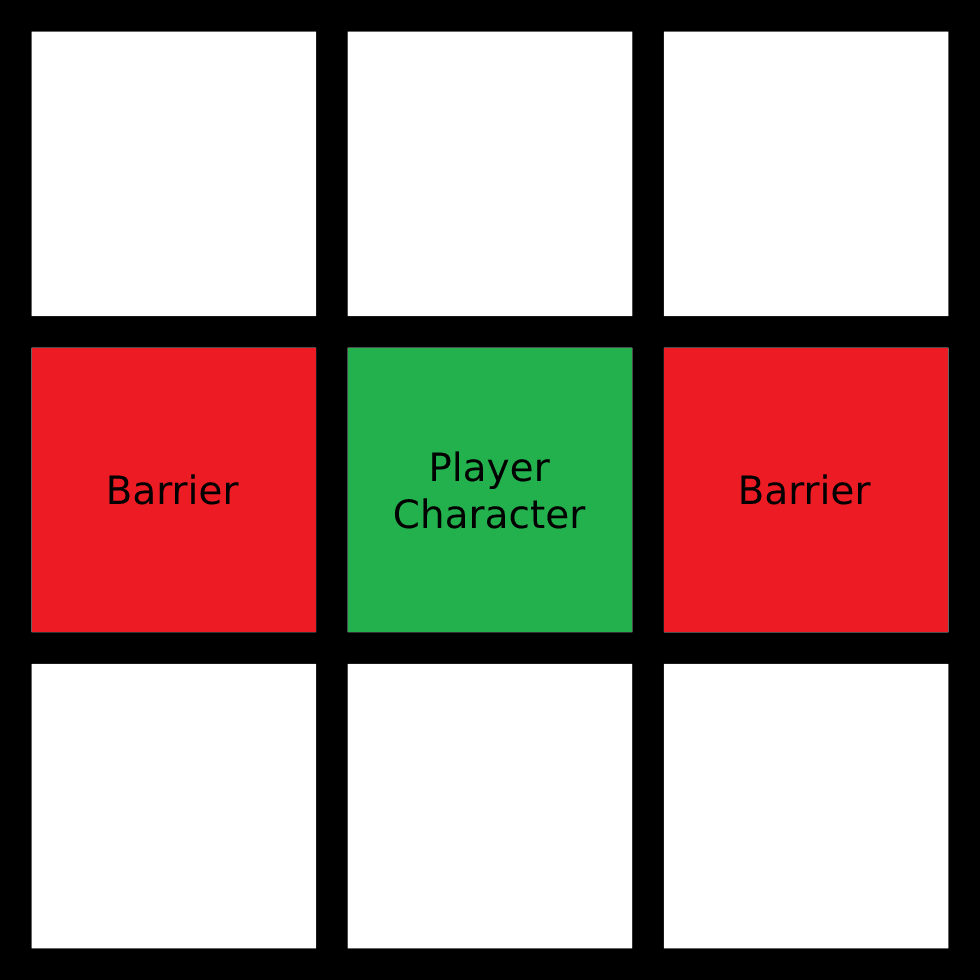
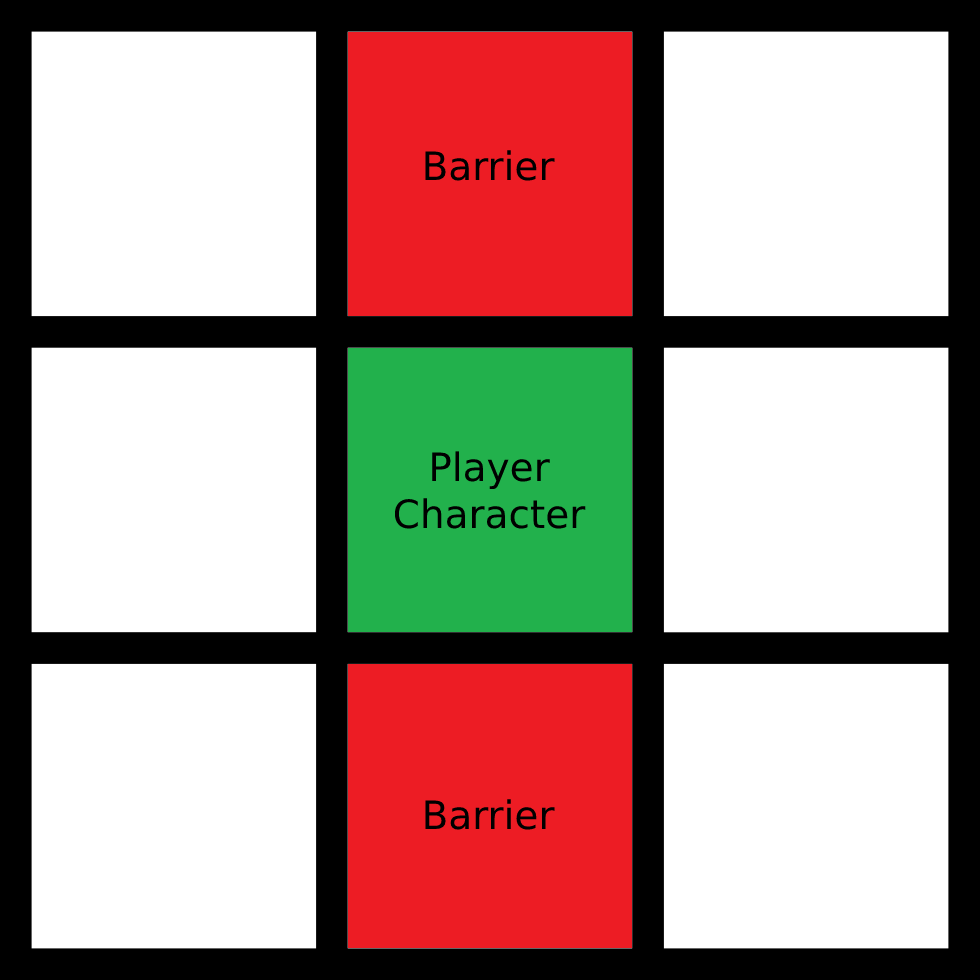
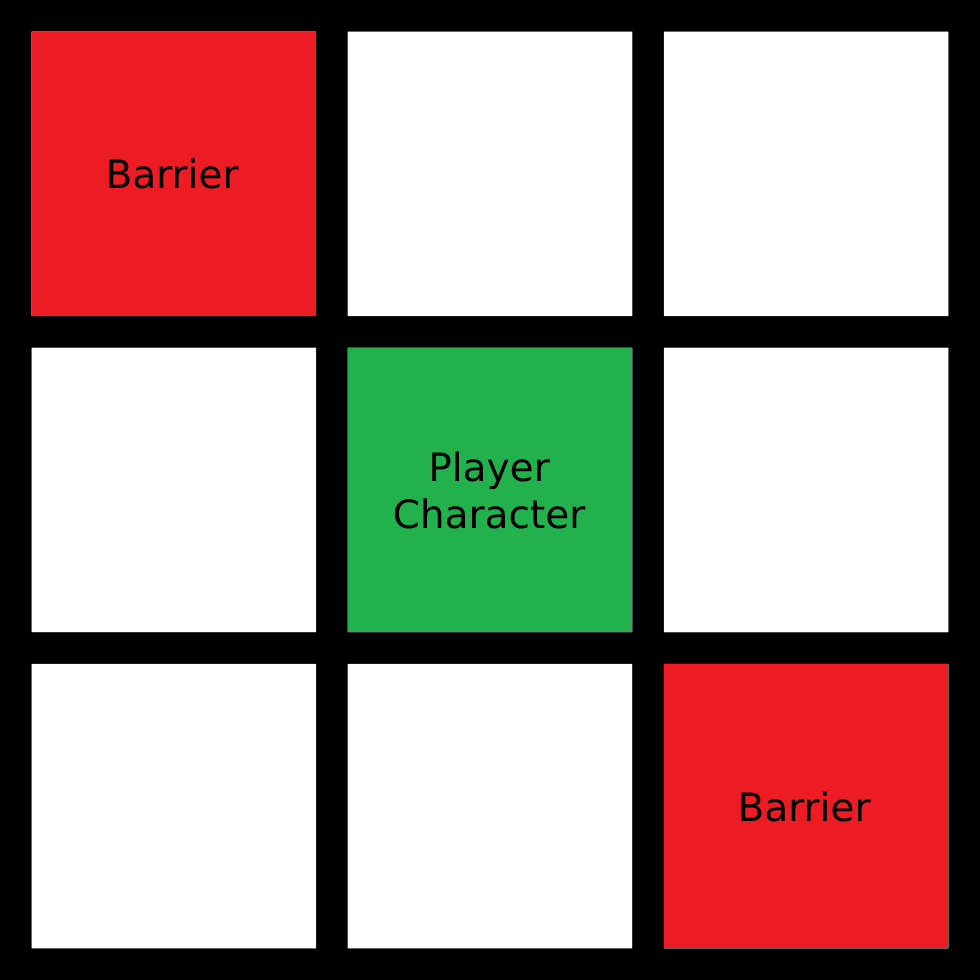
Statblocks
Sometimes when at the table, one may wish to interact or compete with arbalests that are not actual players. The following section includes several statblocks for arbalest NPC's
Arbalest
Arbalests are trained soldiers and mercenaries, versed in strategy and tactics, as well as the unbreakable bond between members of a military unit. In combat, arbalests typically work in groups and use coordinated tactics to win victories.
The Arbalest Unit Names tables present the sorts of titles used by hoplite contingents hailing from Theros's great poleis. Consider using these names for military forces characters encounter during their adventures or that they were once a part of.
Arbalest Unit Names
| d8 | Loot |
|---|---|
| 1 | Iron Wolves |
| 2 | Crimson Hawks |
| 3 | Blue Souls |
| 4 | Grey Dragons |
| 5 | Murder of Steele |
| 6 | Sapphire Roosters |
| 7 | Emerald Guardians |
| 8 | Violet Coyotes |
Troop Arbalest
Troop arbalests are your atypical arbalest. they fight in groups, and can be found working with any type of arbalests specialist in order to cover for them and assist in battle. What they lack in specialization, they make up for in their teamwork skills.
Arcane Arbalest
Arcane arbalest use a combination of cunning, faith, and magic to defend their brother in arms. Most of these skilled soldiers serve alongside magic divisions, bolstering the defenses of a typical mage division, and using an array of strategies and flexible troop formations to gain an advantage over foes.
Monster Meister
Monster meisters are trained in tracking and hunting the ghouls, goblins, and other monstrosities of the night. Be it on on land or in water, they are adept of combating their scary foes and coming through unscathed. They often serve as leaders to small bands of arbalests, traveling in search of work. Their colorful fast-loading crossbows rarely miss their target.
Troop Arbalest
Medium Humanoid (Any Race), Any Alignment
- Armor Class 17 (Scale mail, shield)
- Hit Points 58 (9d8 + 18)
- Speed 30 ft.
STR DEX CON INT WIS CHA 13 (+1) 16 (+3) 14 (+2) 10 (+0) 11 (+0) 10 (+0)
- Skills Perception +2
- Senses passive Perception 12
- Languages any one language (usually Common)
- Challenge 3 (700 XP) Proficiency Bonus +2
Pack Tactics. The arbalest has advantage on an attack roll against a creature if at least one of the arbalest's allies is within 5 feet of the arbalest and the ally isn't incapacitated.
Trigger Finger (1/Turn) The arbalest deals an extra 8 (3d4) damage when it hits a target with a ranged weapon attack and has advantage on the attack roll, or when the target is within 5ft. of an ally of the arbalest that isn't incapacitated and the thief doesn't have disadvantage on the attack roll.
Actions
Multiattack. The Arbalest makes two heavy crossbow attacks. If it has a dagger drawn, it can also make a dagger attack.
Heavy Crossbow. Ranged Weapon Attack: +5 to hit, range 100/400 ft., one target. Hit: 9 (1d10 + 3) piercing damage.
Dagger. Melee Weapon Attack: +3 to hit, reach 5 ft., one target. Hit: 4 (1d4 + 1) piercing damage.
Arcane Arbalest
Medium Humanoid (Any Race), Any Alignment
- Armor Class 17 (Scale mail, shield)
- Hit Points 58 (9d8 + 18)
- Speed 30 ft.
STR DEX CON INT WIS CHA 13 (+1) 16 (+3) 14 (+2) 17 (+3) 11 (+0) 12 (+1)
- Skills Arcana 5, Perception +2
- Senses passive Perception 12
- Languages any one language (usually Common)
- Challenge 4 (1,100 XP) Proficiency Bonus +2
Pack Tactics. The arbalest has advantage on an attack roll against a creature if at least one of the arbalest's allies is within 5 feet of the arbalest and the ally isn't incapacitated.
Spellcasting. The arbalest is a 5th-level spellcaster. Its spellcasting ability is Intelligence (spell save DC 13, +5 to hit with spell attacks). It has the following spells prepared:
Cantrips (at will): mage hand, minor illusion, ray of frost
1st level (4 slots): absorb elements, expeditious retreat, magic missile, sleep
2nd level (3 slots): blur, dragon's breath, invisibility, warding wind
3rd level (3 slots): counterspell, fireball
Trigger Finger (1/Turn) The arbalest deals an extra 8 (3d4) damage when it hits a target with a ranged attack and has advantage on the attack roll, or when the target is within 5ft. of an ally of the arbalest that isn't incapacitated and the thief doesn't have disadvantage on the attack roll.
Actions
Light Crossbow. Ranged Weapon Attack: +5 to hit, range 100/400 ft., one target. Hit: 7 (1d8 + 3) piercing damage.
Dagger. Melee Weapon Attack: +3 to hit, reach 5 ft., one target. Hit: 4 (1d4 + 1) piercing damage.
Ray of Frost (Cantrip). Ranged Spell Attack: +5 to hit, range 60 ft., one creature. Hit: 4 (1d8) cold damage, and the target's speed is reduced by 10 feet until the start of the arbalest's next turn.
Monster Meister
Medium Humanoid (Any Race), Any Alignment
- Armor Class 17 (Scale mail, shield)
- Hit Points 90 (12d8+36)
- Speed 30 ft.
STR DEX CON INT WIS CHA 13 (+1) 16 (+3) 16 (+3) 14 (+2) 11 (+0) 10 (+0)
- Skills Perception +3, Survival, +3
- Senses passive Perception 13
- Languages any one language (usually Common)
- Challenge 5 (1,800 XP) Proficiency Bonus +3
Pack Tactics. The monster meister has advantage on an attack roll against a creature if at least one of the monster meister's allies is within 5 feet of the monster meister and the ally isn't incapacitated.
Shielded Mind. The monster meister's thoughts can't be read by telepathy or other means.
Trigger Finger (1/Turn). The monster meister deals an extra 8 (3d4) damage when it hits a target with a ranged weapon attack and has advantage on the attack roll, or when the target is within 5ft. of an ally of the monster meister that isn't incapacitated and the thief doesn't have disadvantage on the attack roll.
Monster Slayer (1/Day). When the monster meister lands an attack against a monstrosity, undead, ooze, or abberation that deals Trigger Finger damage, the trigger finger dice rolled is doubled.
Actions
Multiattack. The monster meister makes three heavy crossbow attacks. If it has a dagger drawn, it can also make a dagger attack.
Heavy Crossbow. Ranged Weapon Attack: +5 to hit, range 100/400 ft., one target. Hit: 9 (1d10 + 3) piercing damage.
Dagger. Melee Weapon Attack: +4 to hit, reach 5 ft., one target. Hit: 4 (1d4 + 1) piercing damage.
Starting Equipment
When you create your arbalest, you receive equipment based on a combination of your class and background. You can however choose to instead start out with a number of gold pieces based on the following chart and spend the gold on items from the equipment lists in Chapter 5 of the Players Handbook.
Starting Wealth
| Class | Starting Gold |
|---|---|
| Arbalest | 5d4 x 10 gp |
Multiclassing
Multiclassing can allow you to gain levels in multiple classes. The following information will help you with multiclassing into the arbalest class.
Prerequisites
To qualify for a new class, you must meet the ability score prerequisites for both your current class, and the class you wish to multiclass into.
Prerequisites
| Class | Ability Score Minimum |
|---|---|
| Arbalest | Dexterity 13 and Constitution 13 |
Proficiencies
When you gain a level in a class other than your first, you only gain some of that class's starting proficiencies, as shown in the Multiclassing Proficiencies table.
Multiclassing Proficiencies
| Class | Proficiencies Gained | |
|---|---|---|
| Arbalest | Light armor, medium armor, shields, simple weapons, hand crossbow, heavy crossbow, shortsword |
Credits
Created by Jory C.
Contributors: David D.D., Nichoals H.
Proofreaders/Balancers: David D.D., Justin Z., Nicholas H.Art in Order of Appearance
"genoese crossbowman" by Martin Paret
"Front Line" by Dominik Mayer
"Hunter" by Riiick
"Tribal shield" sourced from Open Clip Art
"Crossbowman" by Eric Lee
"Crossbowman" by Stanislav Novarenko
